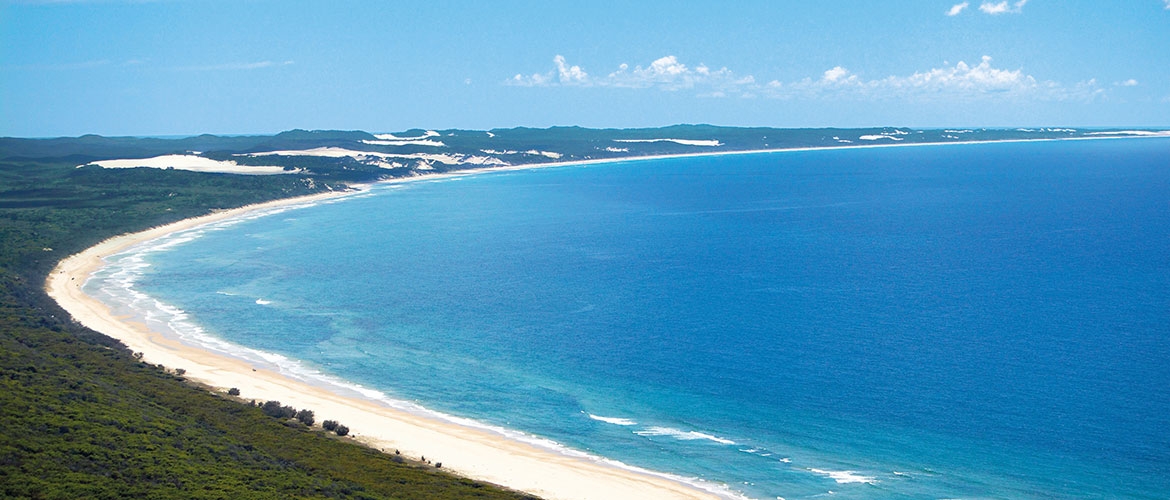These dunes progress across the island often burying forests and other plant communities. The rate of movement of the dunes each year depends on factors such as wind strength, the amount of moisture in the sand and plant colonisation. These dunes will gradually stop moving when they reach areas protected from the winds.
The young dunes behind the eastern beaches are colonised and stabilised by spinifex grass and other coastal plants adapted to harsh salt and wind conditions. In the sheltered central regions of the island, where the dunes are stable and there are more nutrients for growth, diverse plant communities and rainforests are found.
Stonetool Sand blow is an active mobile blow which covered a forest. Now you can see this ancient forest being uncovered as the sand blow moves across the island. It takes its name from the Aboriginal stone tools which were found there.
The coloured sands on Fraser Island occur north of Eli Creek and comprise 72 different colours, mostly reds and yellows. The colours are caused by the leaching of oxides that coat each grain of sand, causing bands of colour.
Seventy-Five Mile Beach is an amazing beach highway where all road rules apply, the speed limit is 80 kilometres an hour and you must give way to aeroplanes landing and taking off. Spot the birds of prey and sea birds that make their home on the east coast and keep an eye out for dingoes. The fishing is excellent, but the strong undertow and large sharks make it unsafe for swimming.

